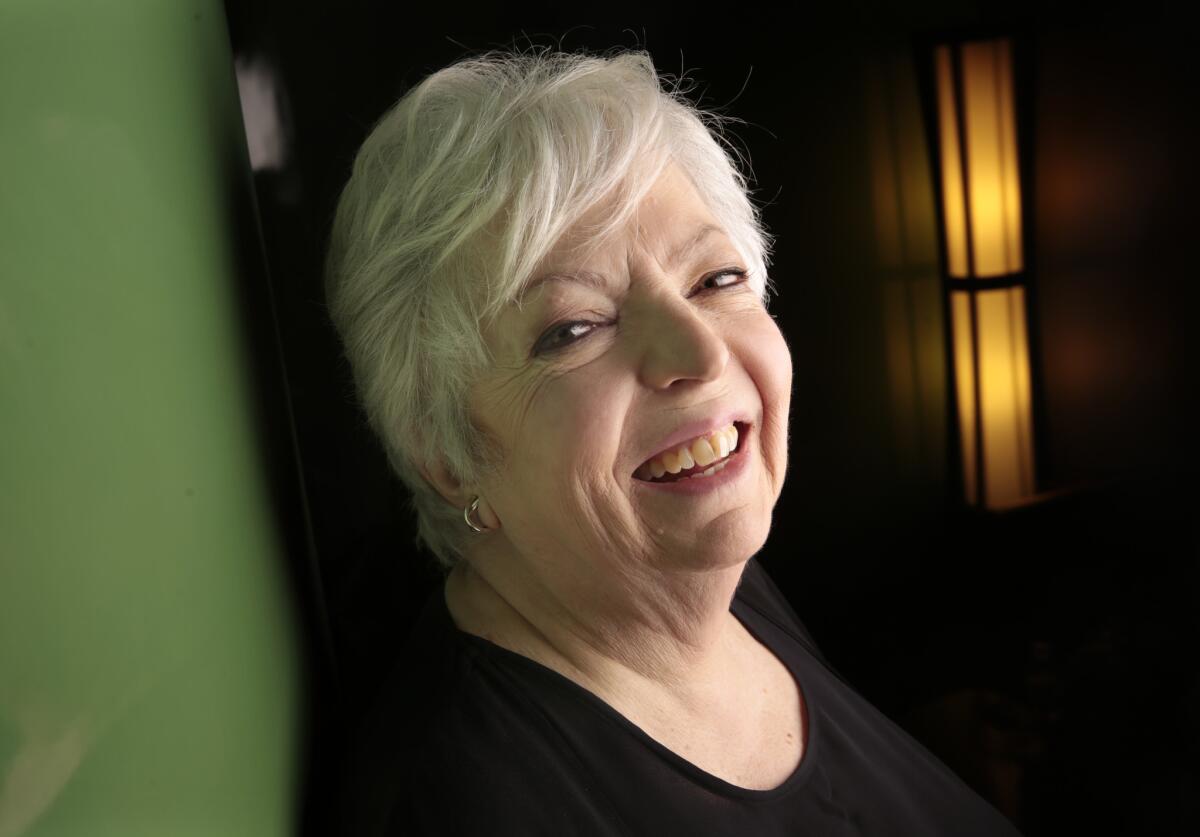Classic Hollywood: Martin Scorsese and Thelma Schoonmaker: Match made in an editing room

- Share via
In the history of cinema, there haven’t been many collaborations like the one between director Martin Scorsese and his longtime film editor Thelma Schoonmaker.
Schoonmaker has been Scorsese’s editor since 1980’s “Raging Bull,” for which she won the first of her three Academy Awards. Schoonmaker, 74, also picked up Oscars for Scorsese’s “The Aviator” (2004) and “The Departed” (2006).
------------
FOR THE RECORD:
Film editor: A May 4 article about film editor Thelma Schoonmaker said that she had received the most Oscar nominations of any female editor. The article did not acknowledge that Barbara McLean is tied with Schoonmaker with seven nominations. The article also quoted Schoonmaker as saying of director Martin Scorsese, “He fights to the teeth for the film that he and the studio can accept.” The quote should have said, “He fights to the death for the film that he and the studio can accept.”
------------
She’s won the most Oscars of any female editor and received the most nominations with seven.
“He really feels he makes his movies in his editing,” said Schoonmaker of her working relationship with Scorsese. “He has very strong ideas. I don’t think enough directors know enough about editing. I don’t think you can be a great director without knowing a lot about editing.”
Author Cari Beauchamp, who specializes in the history of women in cinema, calls the Scorsese-Schoonmaker team “a spectacular partnership.”
It’s also a deep friendship. Through Scorsese, Schoonmaker met her husband, Michael Powell, who, with his partner Emeric Pressburger, directed such Technicolor classics as 1943’s “The Life and Death of Colonel Blimp” and 1948’s “The Red Shoes.”
Scorsese, who had helped rescue Powell from obscurity, introduced him to Schoonmaker while she was cutting “Raging Bull.” They married in 1984, and since his death in 1990, Schoonmaker and Scorsese have been restoring his masterworks.
Scorsese reminded her recently that they have known each other 50 years. The news took her aback.
“That’s unbelievable,” she said, laughing at a poolside conference room at the Hollywood Roosevelt Hotel. “We are so lucky. I can’t even describe what working with him is like. I have the best job in the world.”
The gracious Schoonmaker had been in town for the TCM Classic Film Festival last month when she introduced the 1946 Powell-Pressburger fantasy “A Matter of Life and Death.” She took part in a conversation in front of an appreciative, packed audience at the Roosevelt’s Blossom Room. She was heading out after the interview to work on the restoration of the Powell-Pressburger 1951 classic “Tales of Hoffman.”
She graduated from Cornell University in 1961 after studying political science and Russian, then went to New York City. For young women, she said, “it was the most incredible time. Everything was exploding — poetry, film, art. It was just insane. The world was our oyster. We could get jobs in a gallery, in a publishing house.”
Or even an editing room.
One day, she noticed a newspaper ad offering on-the-job training as a film editor. The job was far from glamorous. She assisted an editor, who would hack up classic foreign films to the appropriate length for TV.
Though she bristles at what the editor did to those films — “It was terrible the way they butchered those films in those days,” she says now — Schoonmaker learned how to cut a negative.
That skill led her to Scorsese. Both were taking a six-week filmmaking course at New York University when the professor asked her to help Scorsese salvage his student film “What’s a Nice Girl Like You Doing in a Place Like This?,” which had been butchered by a negative cutter.
Schoonmaker edited his first feature, 1967’s “Who’s That Knocking at My Door,” and then they worked together as editors on Michael Wadleigh’s 1970 Oscar-winning documentary feature, “Woodstock.”
Despite earning an Oscar nomination as supervising editor on “Woodstock,” Schoonmaker was told that if she wanted to become a member of the Motion Picture Editors Guild, she would have to go back to basics and work as an apprentice and an assistant. She refused.
So for a decade, Schoonmaker worked on various documentaries and small projects until Scorsese got her into the union for “Raging Bull.” And they have worked together ever since.
Scorsese relishes the time he and Schoonmaker work together in what he described as “a very singular” work environment.
“There are very few outside people,” the Oscar-winning filmmaker said by phone from New York. “We literally have the film there and struggle with it, create it, enjoy it, get confused, get tired, get happy, get upset and move on.”
In fact, said Scorsese, “it’s almost like making home movies. The odd aspect of it is they are films made for the commercial market, but they are like home movies.”
Literally.
“We cut ‘Wolf of Wall Street’ here in my house in New York,” noted Scorsese, referring to his 2013 Oscar-nominated hit film starring Leonardo DiCaprio.
Schoonmaker never visits the set during production and often doesn’t read the script to give her a more objective view of the film.
“If something happened on the set, the person doesn’t know that when they see the footage or the rushes,” Scorsese said. “She’ll respond to what works and what doesn’t, which keeps me balanced.”
Scorsese sends her “strong notes” from the set about the various takes. “He is constantly giving the continuity person notes as he is shooting, so I already have the information when I am looking at the dailies myself. Then he gives me additional information when I am sitting with him. He is incredibly sharp and so tough on himself and has such high standards.”
Both were rather shocked at some of the reaction from the press and from audiences in December to “Wolf of Wall Street,” criticizing the director for glorifying the behavior of hedonistic Wall Street brokers.
“I think that was nonsense,” Schoonmaker said. “We had been through it before. When ‘Raging Bull’ came out, people said, ‘Why the hell did you make a movie about Jake LaMotta?’ Well, look at where that movie is today. And ‘Goodfellas,’ the same thing, ‘Casino,’ the same thing.”
Scorsese, she said, has the ability “to lay down human beings truthfully, and that’s not easily digested for audiences. That’s why it took 10 years for ‘Raging Bull’ to even be recognized as the great film that it is.”
Still, said Scorsese, “You get worn down some of the times. I have been making a lot of films. I still like to make them, which means I still like the process. But you do get distracted. There are many, many pressures and stresses, of course, with different issues. So I really rely on her to keep the emotional continuity of the picture.”
For her part, Schoonmaker is deeply loyal to Scorsese.
“He fights to the teeth for the film that he and the studio can accept,” said Schoonmaker. “Marty is not stubborn, he will listen. But if he feels they’re wrong, he’ll stand his ground. It’s wonderful to work with someone like that.”
More to Read
Only good movies
Get the Indie Focus newsletter, Mark Olsen's weekly guide to the world of cinema.
You may occasionally receive promotional content from the Los Angeles Times.











